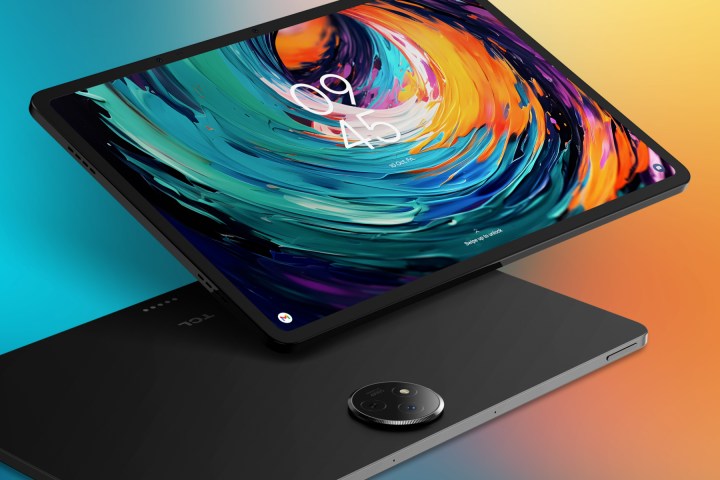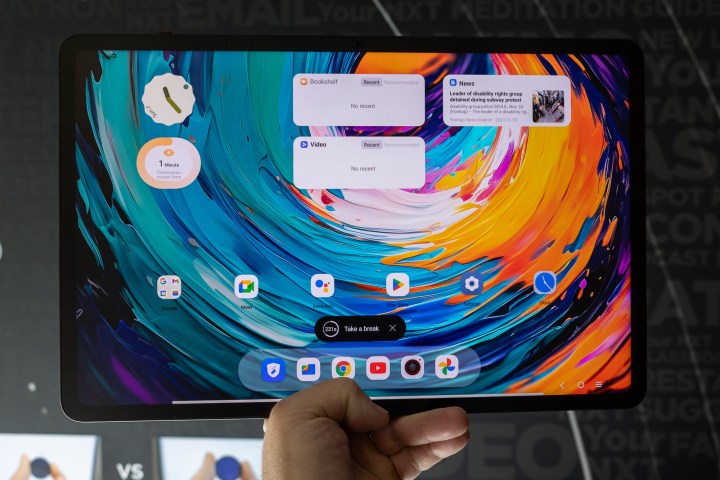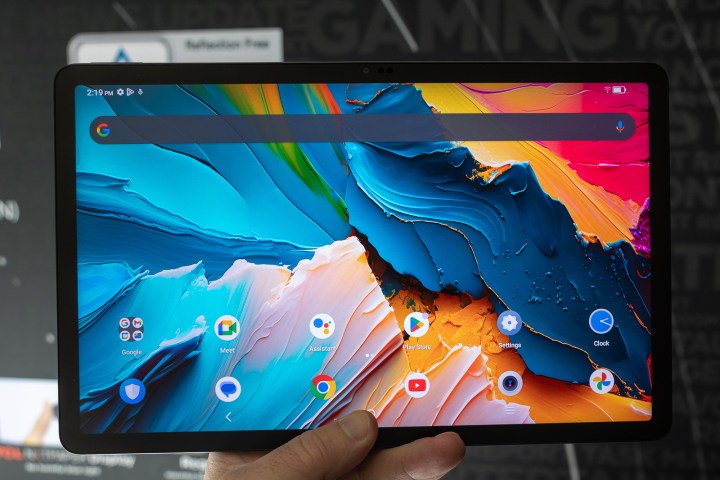
During CES 2024 in Las Vegas, TCL unveiled two new tablets: the TCL NxtPaper 14 Pro and Tab 10 NxtPaper 5G.
Both devices feature the company’s recently announced TCL NxtPaper 3.0 technology. This isn’t the first time we’ve seen NxtPaper technology from TCL, but the 3.0 version has some pretty promising upgrades.
What’s new with NxtPaper 3.0
TCL has improved its popular display technology with the release of TCL NxtPaper 3.0. This technology provides a full-color, paper-like experience while retaining the benefits of traditional LCD screens. The latest version has Circularly Polarized Light (CPL) screens, which mimic natural light’s “emission/reflection/refraction” path. This feature creates a visual experience similar to reading books under natural light, resulting in extra eye comfort and a more paper-like screen.
On the software side, TCL has introduced an eye-care assistant that sends personalized reminders to users to encourage taking breaks during screen time or adjusting poor lighting conditions. This software aligns with expert recommendations for digital device usage and promotes healthy eye care practices.
Of TCL NxtPaper 3.0, Aaron Zhang, CEO of TCL Communication, explains: “Our innovation is about reshaping the integration of technology into everyday life, making it more organic and accessible.”
TCL NxtPaper 14 Pro

The TCL NxtPaper 14 Pro is a 14-inch tablet that offers robust functionality while prioritizing physical health. It features CPL and DC dimming, which provide an immersive, yet eye-friendly viewing experience.
The tablet also has a 3-in-1 VersaView UI that delivers the comfort of reading on paper and the classic aesthetic of a black-and-white user interface. This feature eliminates the need for an e-reader, as the TCL NxtPaper 14 Pro covers all aspects.
The TCL NxtPaper UI seamlessly switches between the standard tablet and color paper or ink paper modes through the dedicated NxtPaper key. It provides the best of both worlds thanks to its software/hardware-integrated technology.
In terms of specs, you’re looking at a MediaTek Dimensity 8200 processor, 12GB of RAM, 256GB of storage, and a 12,000mAh battery with 33-watt wired charging. The 14-inch screen also boasts an impressive 2.8K resolution.
TCL Tab 10 NxtPaper 5G

The TCL Tab 10 NxtPaper tablet offers a range of features and capabilities to make your digital experience more enjoyable and convenient. With 5G connectivity, this 10-inch tablet allows for a continuous and seamless connection to the internet, making it easy for you to stay connected with your friends and family, browse video content, and indulge in light entertainment on the go. Whether traveling, waiting for an appointment, or simply lounging at home, the TCL Tab 10 NxtPaper has you covered.
One of the standout features of this tablet is its immersive reading experience. The 10.4-inch screen is designed to be comfortable and easy-to-read, with eye care features that help to reduce eye strain and fatigue. This makes it an excellent option for avid readers who want to enjoy their favorite books and magazines without straining their eyes or experiencing discomfort.
In addition to its reading features, the TCL Tab 10 NxtPaper also has respectable specifications. The 10.4-inch screen has a 2K resolution, Android 14 is available out of the box, and it has an unnamed “octa-core processor.” The tablet is also designed to be lightweight and portable, making it easy to take with you wherever you go.
Prices and release dates for the two new TCL tablets haven’t been announced. Perhaps one or both will make our list of the year’s best tablets.
Editors' Recommendations
- A new Google Pixel Tablet is coming, but it’s not what you think
- Samsung’s newest Android tablet is a perfect iPad alternative
- Android 15 has two hidden features you’re going to love
- ZTE’s new Android tablet is one of the craziest we’ve seen in 2024
- Google just announced 8 big Android updates. Here’s what’s new





